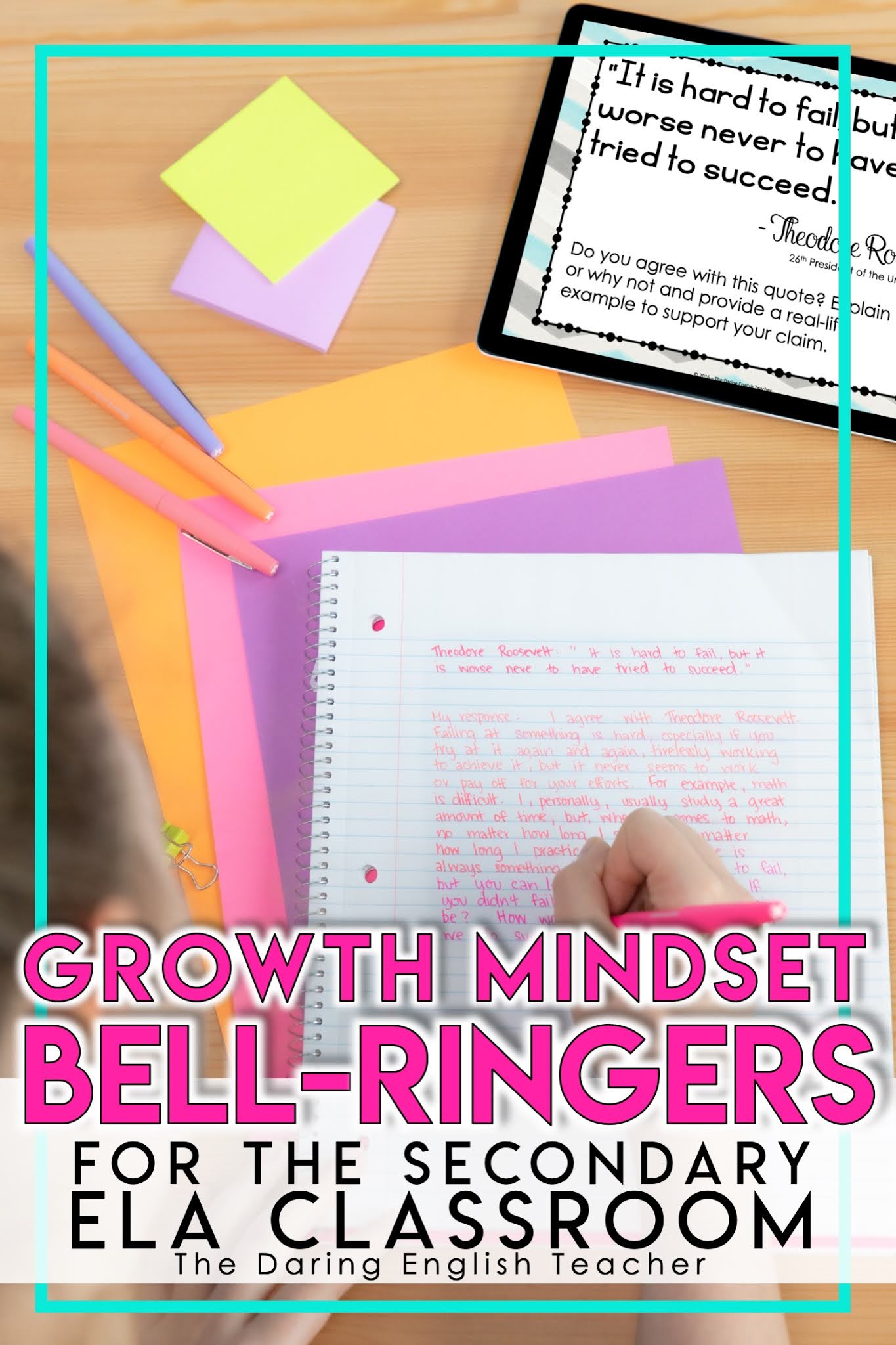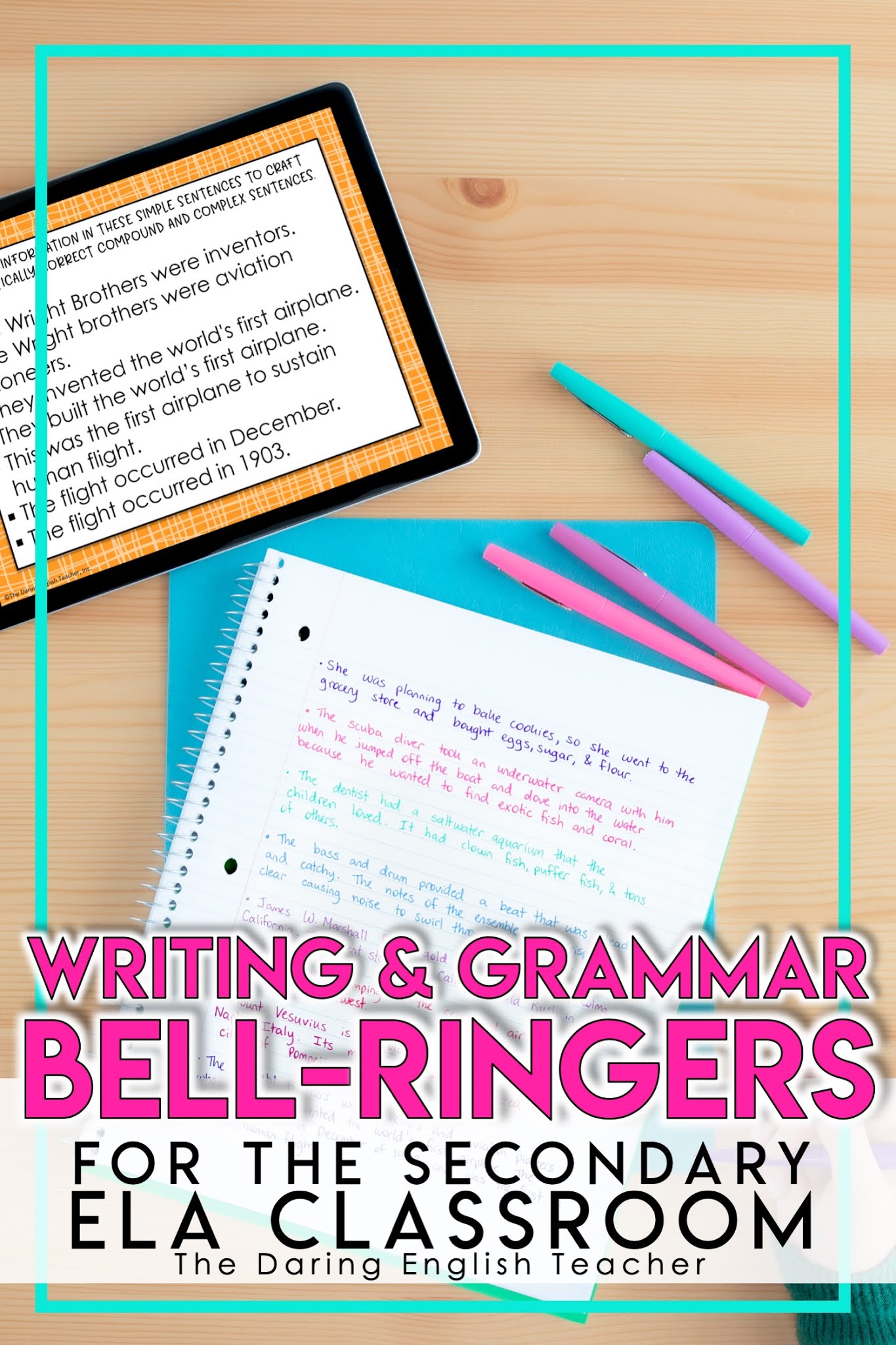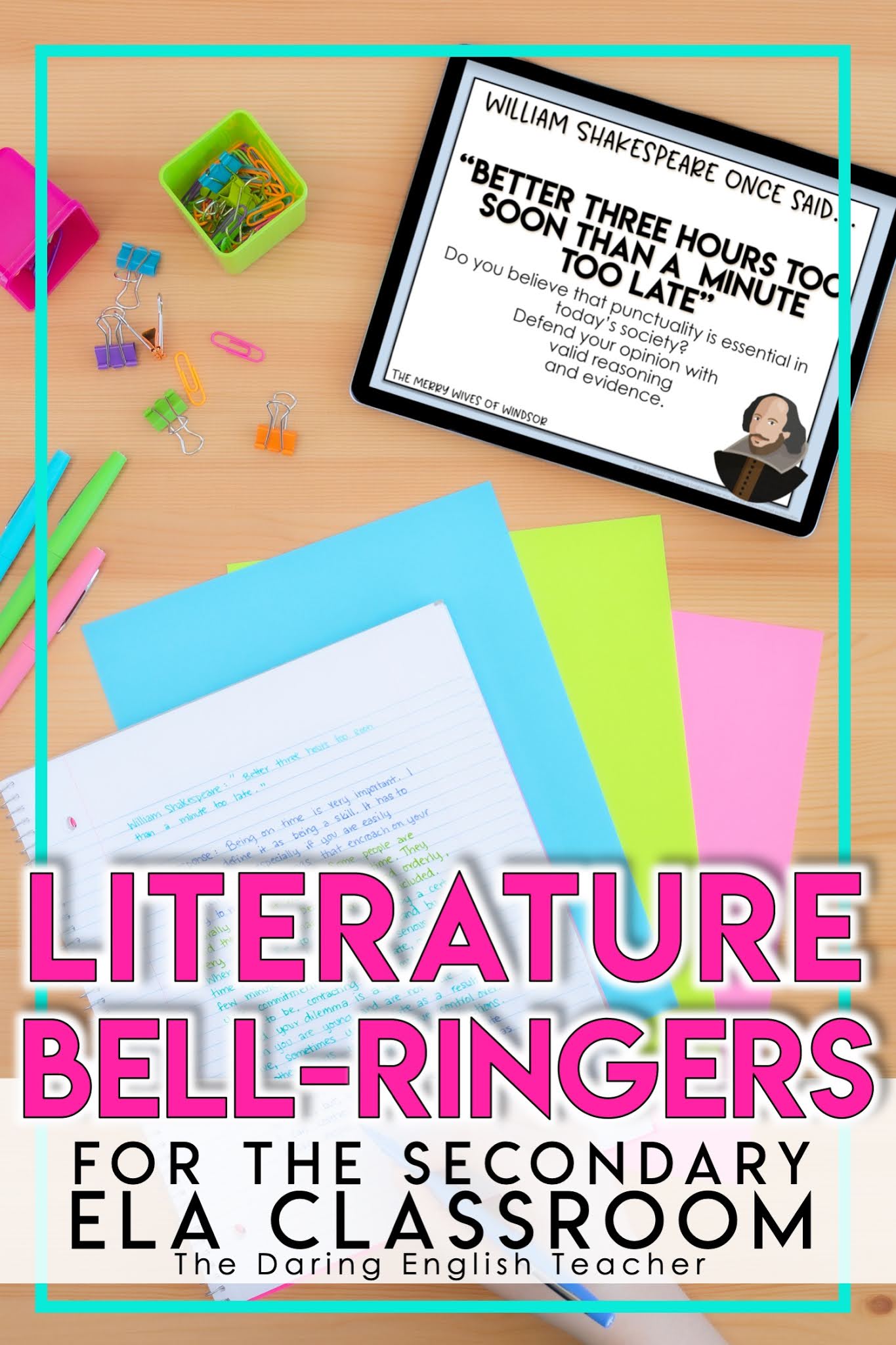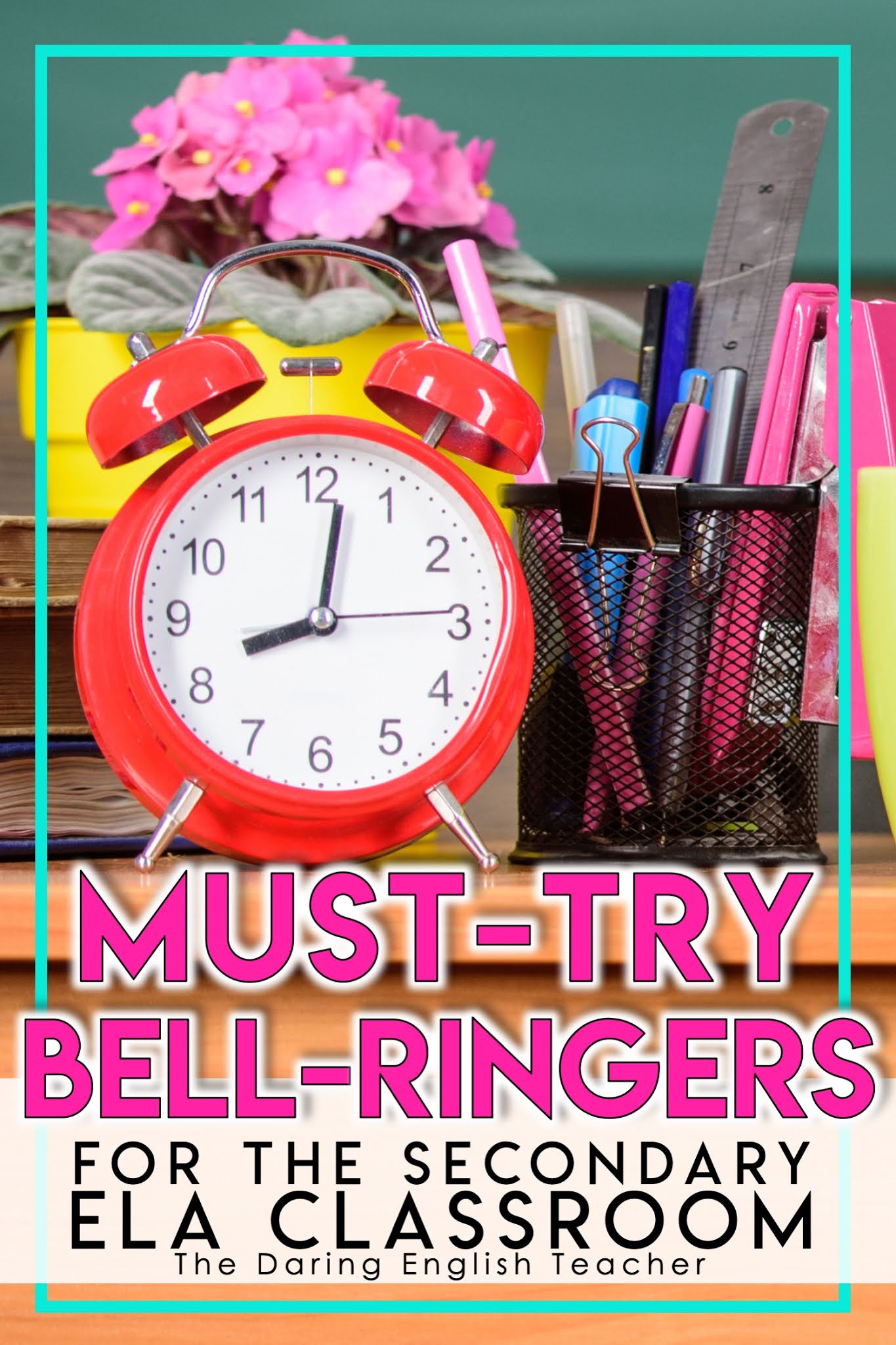It’s likely you’ve heard of bell ringers or have even incorporated some form of them into your own classroom routine. It’s also likely you completed them as a student when you were in school. Whether you’re new to them or a bell-ringer pro, I hope you can take even a small nugget here back to your own classroom!
What are Bell Ringers?
Typically, bell ringers (or bell work) are short, bite-sized activities students complete independently (and quietly) in the first 5-10 minutes of class. They usually involve some small task to get them going and reoriented to your class.
Why Bell Ringers?
Bell ringers are great for engaging students with the day’s topics and objectives while also allowing them time to settle. For teachers, this is a great way to start class off right. Students sit down and complete the bell ringer while you use this time to take attendance, make sure your remote learners are “present,” set up your lessons, and any of the other 20-some tasks you need to accomplish.
Bell-Ringers for the Secondary ELA Classroom
To lighten your load just a bit, I want to share a few teaching resources I’ve created that have helped me with classroom management, organization, and lesson planning.
Using Bell-Ringers Step One: Get Organized
With any type of bell ringer, I suggest starting with a type of recording sheet. This helps students stay organized and also makes assigning grades (if you choose to do this) a lot easier for you.
I use this bell ringer log (free!) in my classroom every single day. I double-side the recording sheet, print it out, and hole-punch it. Students receive a stamp for their daily participation, and it is their responsibility to hold onto the log for four weeks.
Visit this blog post to see a more detailed description of how I use and assess daily bell ringers in my own classroom!
Growth Mindset Bell-Ringers
Helping students develop a growth mindset is so important, but how do we fit it into our already crammed curriculum? I like to use inspirational quotes and have students respond to them. It’s simple, intentional, and a great way to help students accept failure, learn from their mistakes, and realize their true potential.
With Growth Mindset Bell Ringers, teachers receive 30 sets of growth mindset quotes, including a brief writing response. Students get a chance to practice argumentative, informative, and even narrative writing.
Bite-Sized Grammar Bell-Ringers
Grammar instruction is a crucial part of teaching English Language Arts, but it can be overwhelming, and if you’re like me, you struggle to find the time to fit it in with everything else. I’ve found that including bite-sized pieces of grammar instruction is a really effective way to make sure you are staying consistent with grammar while not overloading yourself and your students.
Check out these Sentence Combining Bell Ringers! You get daily writing practice for an entire school year (40 weeks!), including step-by-step instructions to teach students how to combine sentences, 200 different sentence combining slides, and 4 weeks of suggested sentences to help students with the whole process.
Literature-Focused Bell-Ringers
Having students respond to quotes about literature is another great way to get your class started and your students’ brains working! My students enjoy the Common Core Lit Bell Ringers!
This bundle includes 6 different sets of literature bell ringers from authors including William Shakespeare, Ray Bradbury, Ernest Hemingway, Jane Austen, Harper Lee (great to pair with To Kill a Mockingbird!) Edgar Allan Poe, and Elie Wiesel.
Each set includes 30 quotes and comes with a Common Core quick writing prompt that asks students to practice argument, informational, or narrative writing.
There is also an instruction slide included in each set of bell ringers to know what is expected of them when they walk into the classroom. This one is so simple to prep and roll out!
Final Thoughts about Bell-Ringers
Lesson planning and teaching can be stressful and time-consuming, and it is always my hope that my resources and advice can help other teachers engage their students in meaningful activities while also reducing a teacher’s growing workload. I’d love to hear how you’ve used these bell ringers in your own class! Feel free to share!







One Comment
Very helpful. I never called these "bell-ringers" but I completely agree that they help settle a class, and provide focus.